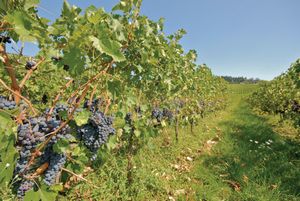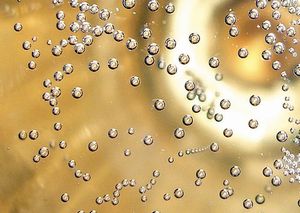Winemaking on the island of Sardinia has a long and fascinating history that predates the Christian era. In fact, some of the most popular grape varietals arrived with the Phoenicians and the Carthaginians. Wine production stayed relatively unchanged until the arrival of conquerors from the Catalan region of Spain around 1200. Throughout their centuries-long domination, the Spanish influenced both the grapes that were grown and the style of wines produced.
Until the 1950s, winemaking was part of the ‘farmhouse culture’, with each household producing wine for its own use. However, after WWII, the government encouraged the organized planting of vineyards in Sardinia and throughout Italy. The result was a brutish vino di taglio—a wine with a high alcohol content, often used to help raise the alcohol level of other wines throughout Europe.
In the 1970s, Sardinian wine production topped 65 million gallons (2.5 million hectolitres) per year. Today it is about 24 million gallons (1 million hectolitres). There are several reasons for this decrease. First, the European Union offered financial incentives to uproot vineyards in order to reduce large wine surpluses. This was followed by a long drought that drove many farmers from their land. And finally, the international wine market experienced a marked shift toward quality instead of quantity.
Encouraged by recent trends, Sardinia has started producing some very attractive wines. Next time you find yourself in the market for something different, try a bottle from Sardinia—you just may find that these notoriously hard-to-love wines have become even harder to resist!
Keep your eye out for these Sardinian varietals in particular
Vermentino
Currently, only one Sardinian wine enjoys the prestigious DOCG denomination—a white called Vermentino di Gallura. It has a high alcohol content and must be made from at least 95 percent vermentino grapes.
Naragus
Nuragus is currently the most widely planted grape on the island. Its ancient ties to this island are reflected in its name, reminiscent of the prehistoric nuraghi structures scattered throughout the countryside. It is used to produce the Nuragus di Cagliari wine. One author says this wine has ‘an inability to rise above a certain fairly basic level of mediocrity’. This dry, light, rather neutral wine marries very well with seafood when served chilled.
Vernaccia
Also worth mentioning is the Vernaccia di Oristano—not to be confused with other wines made in Italy from the Vernaccia grape. This wine has a minimum alcohol level of 15 percent, with some vintages approaching 18 percent. Both the grape and winemaking style were brought from Spain in the fourteenth century, and the finished product resembles a good sherry.
Cannonau
Sardinia’s leading red is the Cannonau di Sardegna—the cannonau grape is related to Spain’s garnacha and France’s grenache. Pay close attention to sub-zones on the labels when you are considering which Cannonau to buy: Oliena (or Nepente di Oliena), Jerzu and Capo Ferrato in particular are worth the slight extra cost.
Monica
The Monica is the second most common red varietal. Popular with growers thanks to its abundance and reliability, the monica grape is resistant to fungus and is well-adapted to the warm, non-fertile, dry soil found in Sardinia. Wines made from this grape are sometimes described as pleasant yet rarely exceptional.
Carignano
Finally, there is the carignano grape found mostly in the southwest region of the island, which is used in the Carignano del Sulcis wine. According to the Oxford Companion to Wine, this grape is ‘high in everything—acidity, tannin, colour, bitterness—except finesse and charm’. However, this area has lots of potential for some big red wines thanks to the planting of syrah grapes used to refine the carignano.








